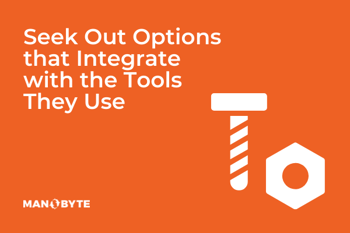
When considering residential and commercial builders as the end user of a product, it is your role as a manufacturer to help them sell more buildings, sell more profitably, and reduce their business risk.
Builders need to know that they can get the right amount of product, at a fair price, at just the right time from you to deliver on the promises that they have made to their clients.
Provide Double Measures of Quality Assurance
Next, they need quality assurance from two fronts: product quality and quality of your customer service. They risk their brand image when selecting products because if it is defective or quickly deteriorates, their image is negatively impacted since, to their client, the buck stops with their builder. Invest in improving your product’s quality assurance measures and delivery standards. Then make sure you have a high level of post sale support for builders including digital installation guides and walkthrough videos, job site installation training, and a single point of contact for a builder to reach with any customer service needs. Ensure your internal and indirect sales reps know to point any of their builder customers towards those resources.
Make Working With You Easy
Most residential and commercial builders feel like the step-child in the distribution channel. Establish a functional relationship with builders by giving them the attention they need.
 1. Foster Self Service
1. Foster Self Service
Builders often have a "take-charge" kind of personality where they assess a situation, make a decision, and want to get it squared away in 27 seconds flat. When they can't operate this way, they are frustrated. Don’t require builders to call into your customer service team or your local distributors to get product specifications and availability information.
You, the manufacturer, know what the product is designed to do, while your local distributors often don’t have the answers to questions builders have. Builders want this information straight from you. List that information directly on your website or in your customer portal in a mobile friendly manner.
 2. Over-Communicate
2. Over-Communicate
Especially with regard to lead times and delivery, builders, superintendents, and project managers need to be able to rely on the information you provide them.
How are builders currently expected to get lead time and delivery information from you?
- Hunting down a customer service phone number or email address and hoping to get an answer?
- Using automated information located on their order confirmation and getting automatic notifications at the last minute when the information changes?
- Logging into a customer portal that houses all order information, order status updates and quick reference materials?
The third option is by far the best option because it caters to the modern consumer's need for up-to-date information at all times. (After all, if pizza shops do this for a $20 item, shouldn't you be able to it for much larger sums of revenue?) Using a PRM like MindMatrix or developing a custom Customer Portal are both valid ways to accomplish this goal.
 3. Integrate with the Tools They Use
3. Integrate with the Tools They Use
Builders and project managers are working to solve the exact same problem you are - providing visibility and accurate information to their clients without having to do double work. They use a wide variety of tools to achieve this objective, but a couple project management specific tools stand out for building products manufacturers to consider when developing specification resources:
- BuilderTrend (a Construction Management platform)
- CoConstruct (a Construction Management platform)
- PlanGrid (a Construction Management platform)
- FieldWire (a Construction Management platform)
- Chief Architect (a BIM which integrates with BuilderTrend)
- SoftPlan (a BIM which integrates with BuilderTrend)
While developing custom integrations with third-party platforms is not always possible, investigate your options. At the very least, understand how to formation your product specification information in a way that can be imported into the software as a CSV file (not as a PDF).
.png?width=350&name=Installation%20Videos%20(2).png) 4. Don't Skimp On Installation Videos
4. Don't Skimp On Installation Videos
Beyond design and project management challenges, builders must also manage the installation of your product. The vast majority of builders will have their installation teams look up YouTube videos while on job sites to ensure the installation goes smoothly given each build still has unique variations.
Have your marketing team and engineering teams collaborate on these installation videos to make sure they are thorough, helpful (not promotional), and speak the exact language the installers speak.
 5. Match Your Product Offerings to Consumer Demand
5. Match Your Product Offerings to Consumer Demand
Builders are constantly evaluating consumer trends and industry trajectories to ensure the building that is finished months or years from now is still relevant to the modern buyer of that time while simultaneously allowing them to squeeze out at least a 3-5% profit.
Support them in their goals by providing up to date industry research that helps them stay abreast of building trends and by helping them operate profitably. Anything you can do to streamline their workflow so that they can focus more time on selling rather than administrative overhead tasks, the better. You will be helping them grow their business and thus they will order more products and materials from you if your products stay competitively priced and readily available.
Selling to Builders
In short, solve builder's problems rather than being the problem. The same goes for selling to contractors, along with these considerations for becoming the preferred brand for contractors.
Learn more about where residential and commercial builders conduct new product research, identify their top purchase motivations, and use our Buyer's Journey Mapping template to realign your strategy of selling to, through, for, and with builders when you download the End User Buyer Personas Guide by clicking below:
Ready to Dive In?
Work with our team of HubSpot experts and watch us take clunky systems, tech stacks, websites, and portals and turn them into tailored, intelligent workflows that deliver business outcomes.



